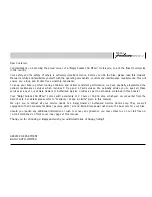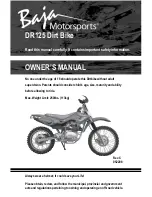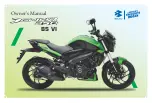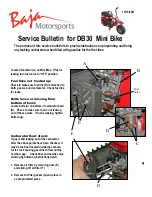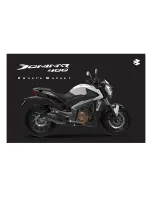
D14/4
CHAINS
H3
To
shorten
a chain containing an
even
number of
pitches: remove the parts shown (
A
) Fig. H3, replace
by cranked double link and single connecting link,
parts shown (
B
) Fig. H3.
To
shorten
a chain containing an
odd
number of
pitches: remove the parts shown (
C
) Fig. H3, replace
by single connecting link and inner link, parts shown
(D) Fig. H3.
To
repair
a chain with a broken roller or inner link,
remove the parts shown (
E
) Fig. H3, replace by two
single connecting links and one inner link, parts
shown (
F
) Fig. H3.
CHAIN AND SPROCKET INSPECTION
Chain sprockets on a new machine should be correctly
aligned but malalignment may arise in use. This may
be due perhaps to slackened nuts, incorrect reassembly
after say, an emergency repair, or minor spills. A
periodical alignment check is therefore desirable, and
is most easily done when the machine is undergoing
overhaul as removal of adjacent components facilitates
the job.
A straight-edge across the sides of the teeth on the
two sprockets should touch at four points, in any
position of rotation of the sprockets. If the latter are in
correct alignment, the inner plates of the chain will be
lightly polished equally on their inner sides and this is
not detrimental. However, if one side shows
considerably more wear than the other, it indicates that
the shafts are not parallel (as viewed from the above)
or not in the same plane (as viewed from the back of
the machine). If the inner plates on both sides of the
chain show real wear as opposed to polishing,
particularly after a comparatively short mileage, it is
probable that one sprocket is further out on its shaft
than the other.
FIG. H4.
Worn sprocket.
Sprockets which are excessively worn assume a
"hooked" appearance, as shown above. When they are
replaced check the new ones for accuracy. A new
chain should fit completely round the teeth with a snug
fit, neither too slack nor having a tight "springy" feel.
The sprocket bore must be concentric, otherwise the
chain will tend to slacken and tighten as the sprockets
are rotated.
With the sprocket in position, a pointer fitted
adjacent to the teeth edges will detect such faults, if
any show up, the sprocket should be rejected,
assuming that the wobble is not caused by a bent shaft.
Failure to correct such faults will cause the chain to
wear quickly and unevenly.
Summary of Contents for D14/4 BANTAM SUPREME D14/4 BANTAM SPORTS
Page 3: ...Page 3 ...
Page 4: ...Page 4 ...
Page 5: ...Page 5 ...
Page 28: ...D14 4 ENGINE B2 FIG B1 Engine exploded ...
Page 47: ...D14 4 CARBURETTER C2 FIG C 1 Concentric carburetter exploded ...
Page 55: ...D14 4 FRAME AND FITTINGS D2 FIG D1 Frame dimensions ...
Page 100: ...D14 4 ELECTRICAL SYSTEM G14 FIG G8 Wiring diagram all models except Bushman Pastoral ...
Page 101: ...D14 4 ELECTRICAL SYSTEM G15 FIG G9 Wiring diagram Bushman Pastoral models ...































